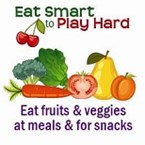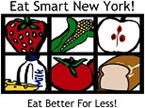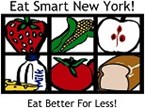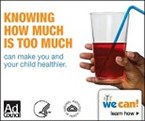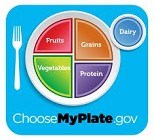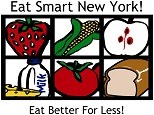Kids love to snack, and that’s a good thing. Snacks are an important part of a growing child’s diet. Because their stomachs are small, children don’t always meet their nutritional needs with just three meals a day. Combine healthy snacks and nutritious meals to give children the nutrients they need for growth and development. Healthy eating habits are best formed during childhood. By teaching - and showing - children how to select healthy snacks at an early age, you’ll set the stage for a lifetime of healthy eating habits. And, don’t forget that families are a child’s best teacher. Teach children about healthy snacking by being positive role models.
Is Snacking Healthy?
If you choose wisely, snacks give children the extra vitamins, minerals, fiber, and energy they can’t get from meals alone. In a study published in the Journal of the American Dietetic Association, researchers noted that children who ate healthy snacks ate less fat, more protein, and fewer empty calories than children who didn’t snack.
Snacks should be healthy, nutritious foods. The American Academy of Pediatrics and American Heart Association recommend offering children more fruits, vegetables, whole grains, and non-fat or reduced fat dairy foods. They advise, also, to avoid pairing snacks with sedentary activities, such as watching television, and limit sugar-sweetened beverages (e.g., soft drinks and sports drinks) and foods with added sugars, saturated fat, sodium, and Trans fats.
Snacks supply important nutrients without “empty” calories. They’re different from – and healthier than – treats. Remember the difference:
• Snacks should be part of a healthy, everyday diet. Snacks should supplement meals, not replace them. The purpose of a snack is to keep hunger at bay until your child’s next meal, while providing key nutrients for growth and development.
• Treats, on the other hand, are “special occasion” foods. You don’t have to eliminate treats entirely. But, you should limit how often you serve them. Don’t present treats as snacks; make them “once-in-a-while” foods. Treats tend to be high in fat, Trans fat, sugar, salt, and calories with few, if any, nutrients. Replace them with healthy snacks…fruits, vegetables, whole grains, and reduced-fat dairy foods.
Plan Ahead
Prepare and portion out snacks a day or two ahead of time so they are ready in a time crunch. Portioning out the amount you want your child to eat in individual servings will assure that kids don’t over-eat. This will also save time since you can “grab and go.”
Place snack bags and containers low in the pantry or refrigerator shelves so they are easily accessible for younger children.
Take along pre-made snack bags in your child’s backpack or in your handbag, briefcase or car when you know you’ll be away from home. You’ll give hunger pangs a run for their money.
Time meals and snacks. Offer snacks midway between meals so they don’t interfere with your child’s appetite at meals.
Stock the Pantry & Fridge With Nutritious Options
Healthy snacks start with healthy foods. Stock the pantry and refrigerator with foods that are good sources of fiber, iron, calcium, and vitamin C – key nutrients that growing kids need.
• Fruits and vegetables – fresh, frozen, canned, or dried – make excellent snacks for children. They’re loaded with fiber and a host of nutrients, including vitamins A, C, and minerals. Serve a variety of colors (red grapes, yellow peppers, green kiwi, orange mangoes) and different shapes (carrot “chips,” baby carrots, shredded carrots) to keep it fun. Go easy on the juice. Limit juice to 6 ounces per day.
• Look for whole grain English muffins, pitas, tortillas, cereal bars, popcorn, cereal, and pretzels/crackers to add B vitamins and fiber. (The words whole wheat or whole grain should appear first on the ingredient list.)
• Include fat-free or low-fat versions of dairy foods like milk, cheese, and yogurt for calcium and protein.
• Limit foods that are high in Trans fat, sugar, sodium, fat, and calories.
Offer snack-size portions. Children need smaller portions than adults. As a rule, a young child’s portion size should be about 1/3 that of an adult’s. Older children and teens require larger portion sizes…but don’t serve too much food. A snack should never ruin a child’s appetite for the next meal.
Just like meals, make sure snacks have variety. Keep it interesting and serve different foods from each food group.
Use MyPlate to plan snacks. Pair one or more different food groups in each snack.
Here are a few examples:
• Fresh veggies with peanut butter or hummus to dip
• Homemade trail mix with popcorn, raisins, nuts, and dry cereal like Cheerios®
• Low-sugar cereal (Cherrios, corn flakes, or raisin bran) with non-fat milk and berries
• Frozen orange juice ice pops with veggies (like baby carrots or bell pepper slices) and low-fat salad dressing for dip
• Yogurt with fresh fruit
• Low-fat cheese slices and whole grain crackers• Cottage cheese mixed with applesauce or fresh fruit
• Cereal bar with reduced-fat milk• Whole wheat or pumpernickel pretzels with orange juice
• Popcorn and fruit slices
Create-A-Snack Ideas
Test out these easy-to-prepare snack recipes. They work as snacks because they combine healthy foods from the different food groups, but their portions are small.
• Individual Pizzas: Spread ready-made tomato or pizza sauce on a toasted whole grain English muffin half or a mini bagel. Top with shredded low-fat mozzarella or cheddar and sprinkle with chopped veggies. Heat in a 400° F. oven or toaster oven until cheese melts – or serve chilled if you’re crunched for time.
• Fruit Mush: Put reduced-fat milk or yogurt, ice, and cut-up fruit (fresh, frozen, or canned) in a blender. Blend until mushy.
• Salad Pockets: Chop up a few different vegetables and stuff them in a whole wheat pita (or roll them in a tortilla). Top with shredded low-fat cheese, salsa, plain low-fat yogurt flavored with garlic powder, or reduced-fat salad dressing. Lettuce leaves, sugar snap peas, shredded carrots, diced tomatoes, baby spinach, mushrooms, bell peppers, and corn work well.
• Carrot Chips, Apple Slices and Grape Tomatoes: Pair store-sliced carrots and apples with tiny grape tomatoes for a healthy, easy “grab-N-go” snack. (Note: For younger children, halve the grape tomatoes to reduce choking risk.)




